Genre: Simulation Developer: Origin Systems Publisher: Origin Systems Players: 1 Released: 1994
In the distant future, mankind is locked in a deadly war…
With these words began one of the most epic video game series of the 1990s! A series of space opera/combat simulators that brought it to five installments, several add-ons and three spin-offs, one of which received two expansion sets and a sequel in its own right – and was almost buried in 1999 when its original creator directed one of the worst video game movies ever made based on the series. It would take eight years until a new game was created as downloadable XBOX content in 2007. I am speaking, of course, of Wing Commander.
Originally released in 1990, this game began a trend that would be very significant for the series throughout its run: system requirements. In order to enjoy the game in its fullest graphical and aural glory, gamers needed to have a 386 IBM PC, VGA-graphics capability and even a sound card – back then pure luxury. Players who had that, though, were blown away by the colorful 256-color graphics and a great orchestral soundtrack perfectly befitting the atmosphere. When Wing Commander III: Heart of the Tiger hit PCs in 1994, the first installment saw a massive re-release on a broad scale, with a number of re-releases and console ports to various systems.
To the game itself: The year is 2654, and the human race is waging war against the Kilrathi, an aggressive feline warrior race. The player is a young pilot who just got transferred to the TCS Tigers Claw. In a series of missions, you fight the Kilrathi over the dominance in the Vega sector. What’s really nice is that player performance decides the outcome of the entire campaign: The storyline tree branches off into different sectors, depending whether a mission was successful or not. Underperform (by losing escorts, ejecting from your vessel too often, or cutting your patrols short) and you end up on the losing track; complete your set goals and you’ll remain on the road to victory (and net you a promotion into higher ranks). By going above and beyond your set duties (by shooting down Kilrathi Aces or eliminating warships) while also completing your mission requirements you can earn medals of honor as well.
But don’t worry: You don’t have to have a perfect run on the entire game. Depending on if you win or lose in a certain sector, the next few missions will take place either on the winning or the losing side of the game tree. Even if you end up on the latter, you can always return to the side of victory by performing well on the next few engagements. Depending on how you fly, you will encounter new missions on the next playthrough and fly with different wingmen, greatly improving the replay factor of the game. If you want to rack up a particularly high number of enemy kills, you even HAVE to lose a few missions and prolong the game with a few extra sorties. So, if you’re too damaged, don’t be afraid to run away using your afterburners, cut a mission short by reprogramming your nav computer or even abandon your ship by ejecting – as long as you live to fight another day, there’s a chance to end up on the winning side still.
One of the biggest challenges of the Sega CD port lies in mastering the controls. Wing Commander was created for the PC and took advantage of the keyboard for a multitude of different functions, which truly shows. Firing your main guns and rockets, engaging the afterburners, locking on to targets, accessing the communications display, even cycling through different points of view of your ship, everything was mapped to specific keys. Cramming all these functions into a single joypad means that the player will have to memorize quite a lot of button combinations (i.e. A+B for firing rockets, or start + B + C for ejecting), or have some button presses do different things depending on the situation. Don’t even bother trying to play this game with a three-button pad – you’ll go insane trying to pull off strategic maneuvers like commanding your wingman to attack a specific target, having six buttons is an absolute must! A programmable game pad (like the SG Propad 6) helps things a bit (by mapping some of the more cumbersome combinations to the shoulder buttons). If you can get your hands on an arcade stick, though, I highly recommend using one of those in lieu of a regular joypad: This game was meant to be played with a stick, and it greatly improves the entire feel of the game if you use one.
Other than that, the port remained mostly intact. Of course, the graphics did take a slight hit: The resolution is lower than in the original, which results in a blockier appearance, especially during the fight sequences. Also, the number of colors is slightly reduced. Still, although a bit darker, the game still looks better than both the Amiga and the Super Nintendo ports, making this the second-best looking version right after the PC original (discounting Super Wing Commander for 3DO and the Mac, since these were entire remakes based on a new engine). You can still save after each mission as well – curiously, though, the number of saves has been reduced to four (PC and Amiga versions have eight possible save states, and even the Super Nintendo incarnation got six).
Unfortunately, due to a lack of processing power, the gameplay took a huge hit. Even with lower resolution and reduced colors, the strain on the Genesis is often too high for the console to handle: The gameplay feels very sluggish, and whenever additional ships appear on screen, the frame rate drops noticeably. Taking on two ships alone isn’t that much of a problem and still plays rather smoothly. Encountering three ships and an enemy tanker is way harder to handle as everything gets noticeably slower, making proper aiming more of a gamble, since you have to aim ahead of the prospected route of your enemy. Taking on four fighters in an asteroid field becomes almost impossible. Frames skip, the flow of the game slows down to a crawl, and trying to avoid both floating rocks and incoming enemy fire during this slide show of a battle becomes an exercise in frustration! Since encounters like these are more frequent in the later stages, the entire feel of the game becomes way slower and more irritating.
Then again, this version caters to the strengths of the Sega CD and received a new orchestrated redbook audio soundtrack for the game, complete with actual speech for every single character. Having everyone actually talk adds greatly to the atmosphere of the game – it truly is a nice touch when you can taunt your enemy in-fight and he hurls an audible insult back at you. Sometimes the spoken audio tends to be a bit too cheesy, though. Some of your shipmates talk with heavy accents reflecting their ancestry; the at times overbearing Scottish, Australian, French or faux Chinese manners of speaking are a tad too much to handle, and some speakers (Maniac!) are just painful listening to! A bit less would probably have been better.
There’s one more gripe I have that comes with the speech: Since you get addressed by name, the creators of this port have decided to attach a fixed last name and call sign to your character (in the original and the other ports you could choose those freely). That in itself wouldn’t be a problem. However, whoever was responsible decided to make both exactly the same: Your character starts out as Second Lieutenant “Hotshot” Hotshot! Just think of this: Your wingmen have names like Major “Paladin” Taggart, Captain “Angel” Devereaux, Lt. “Maniac” Marshall – and the player is Lt “Hotshot” Hotshot! Whoever thought this would be a good idea? It sounds stupid and kind of ruins the mood. It’s unbelievable: They went through all this effort giving every character his own voice, but when it came down to the player’s name, they suddenly got incredibly lazy!
Nevertheless, right after the original, the Sega CD port is probably the best version of the original Wing Commander out there. The premise of the game is excellent in all installments, but this one also sports a fantastic sound with great extra speech (although at times a bit over the top), some good looks, and decent gameplay – as long as there aren’t too many objects on screen. Unfortunately, the huge drop in the frame rate due to technical limitations of the console makes the game a bit hard to bear, especially in later stages. Otherwise it would have been a great port. As it is, it is only a rather good one.
SCORE: 7 out of 10

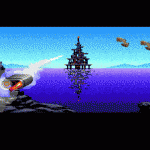
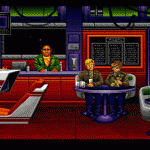
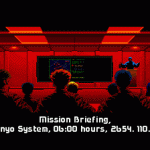
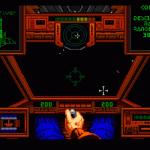
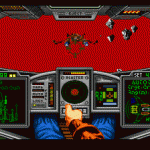
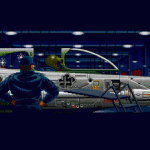
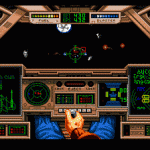
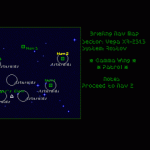
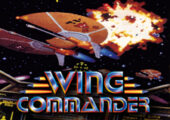
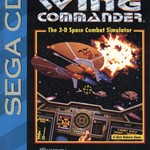
i REALLY want to love this game. i enjoyed everything about it until i got to the core of it [the shooting part itself] and found it sloppy and slow. I’m sure it takes some getting used to and look foward to figuring out what the hell to do once you’re flying around. the graphics in the control room and briefings are pure 90’s PC game bliss, but being unable to progress past the first mission made me frustraded quickly. I really do want to love this game and i hope i do one day. even though i haven’t had a great experience so far i can see this being a sega cd gem. pick this one up if you can, a great addition to the sega cd archive, i just wish the gameplay was a little easier.